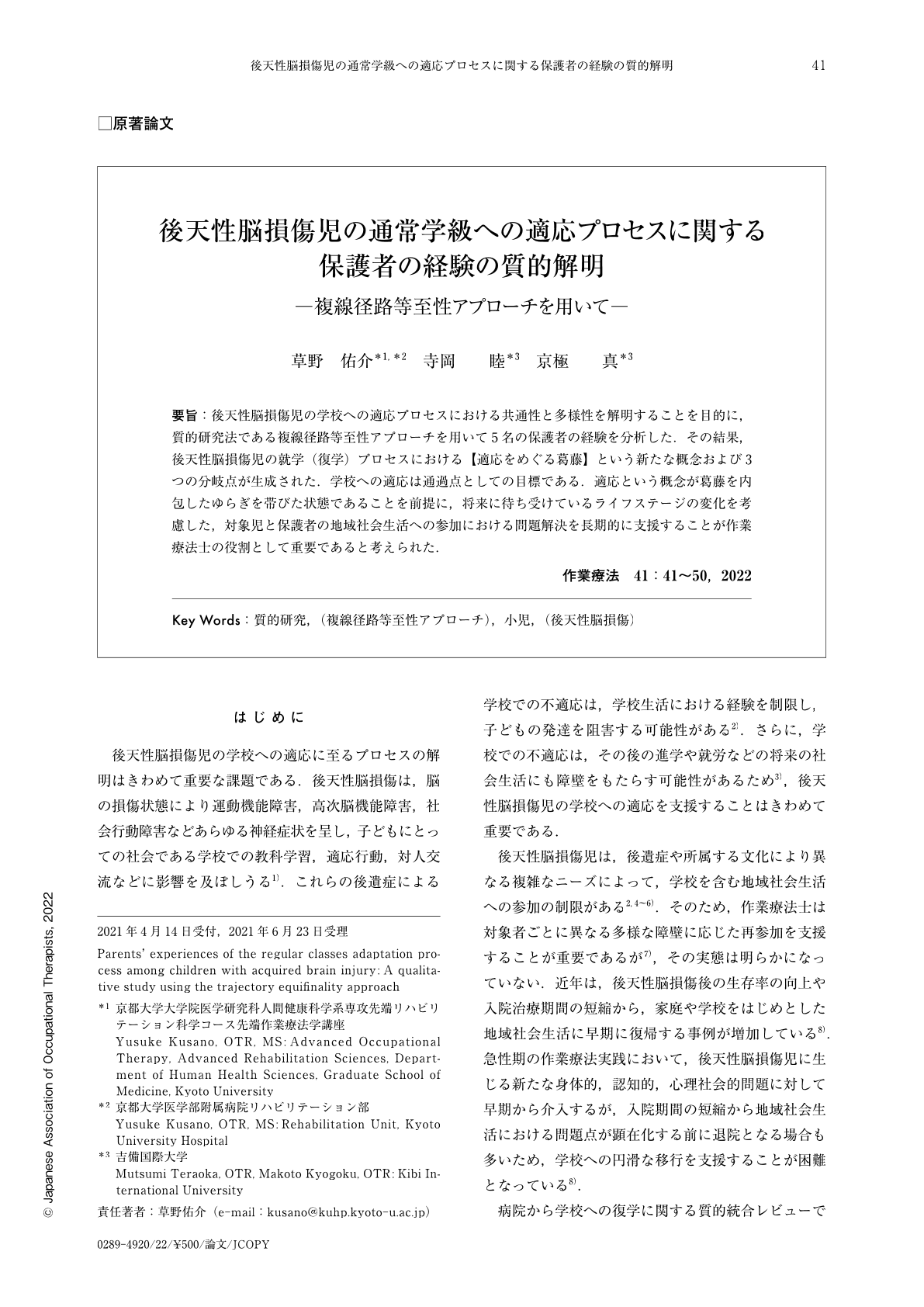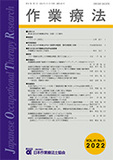Japanese
English
- 販売していません
- Abstract 文献概要
- 1ページ目 Look Inside
- 参考文献 Reference
- サイト内被引用 Cited by
要旨:後天性脳損傷児の学校への適応プロセスにおける共通性と多様性を解明することを目的に,質的研究法である複線径路等至性アプローチを用いて5名の保護者の経験を分析した.その結果,後天性脳損傷児の就学(復学)プロセスにおける【適応をめぐる葛藤】という新たな概念および3つの分岐点が生成された.学校への適応は通過点としての目標である.適応という概念が葛藤を内包したゆらぎを帯びた状態であることを前提に,将来に待ち受けているライフステージの変化を考慮した,対象児と保護者の地域社会生活への参加における問題解決を長期的に支援することが作業療法士の役割として重要であると考えられた.
The aim of this study was to clarify the commonality and diversity of school adaptation processes in children with acquired brain injury. The experiences of five parents were analyzed using a qualitative research method: the Trajectory Equifinality Approach. As a result, a new concept of “conflict over adjustment” and three Bifurcation Points in the process of returning to school for children with acquired brain injury were generated. The adaptation to school is a transitional point goal, and the concept of adaptation is a fluctuating state that included parents' conflicts. The role of the occupational therapist is to provide long-term support for problem-solving in the participation of the child and parents in community life, while considering future life stage changes.

Copyright © 2022, Japanese Association of Occupational Therapists. All rights reserved.


